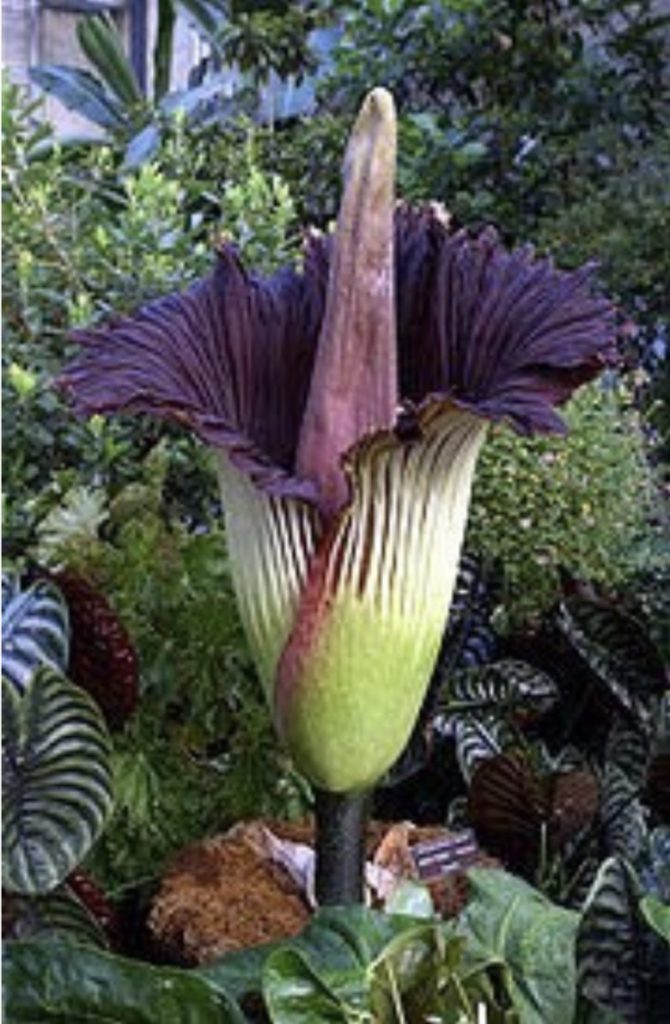Introduction
If there was a competition to determine the strangest plant in the world, I would nominate the Devil’s Tongue, or as it is more commonly known, the Konjac (yes, the one some people eat). A Konjac plant is huge: it can grow up to 1m in height and 30cm in diameter. And while the lilly itself looks pretty, it also exerts an extremely foul smell. But the weirdness doesn’t end there. The most important feature of this plant is its ability to generate heat just like mammals. Surprisingly, a Konjac’s flower can keep itself up to 15oC warmer than its surroundings by burning off energy at a rapid rate in their mitochondria (their metabolic rate is actually as fast as that of a hummingbird).
Konjac is not the only plant that does this though; other species like the Sacred Lotus, Titan Arum, and the White Spot Giant Arum all exhibit this property and are collectively known as thermogenic plants.


Why do they Generate Heat?
The reason Konjacs and other thermogenic plants generate heat is not completely understood by scientists today. However, the most commonly accepted theory is that the heat helps pollination. In the case of a Konjac plant, the heat they produce helps attract pollinators by creating a “burnt meat” smell. They burn the exact same proteins that are found in animals to trick beetles and flies into thinking that food is there. Moreover, as the insects approach the plant, their body temperature rises and makes them more active. They will look around for the nonexistent “rotten meat”, and in the process pollinate the plant.
In other thermogenic species, in addition to spreading their odor, the heat is also produced to protect them from freezing under the snow. This is most obviously demonstrated by the Eastern Skunk Cabbage which grows in the wetlands of North America. During the winter, the heat helps melt the ice around them and creates a small cave. This allows the plant to get pollinated during the early spring where insects are active.
Why does it Matter?
Sure, stinky, large, and hot plants are fun to observe, but why would a scientist want to study these plants? Well, it turns out that these big plants might help us improve our food production as concerns of overpopulation grow. Since the intensity of heat generation corresponds to the metabolic activity in these plants, researchers can easily identify healthy plants by simply measuring their temperature during their embryonic period. They can reliably predict a plant’s growth rate throughout its lifetime and are able to select the ones that will yield the most food. Researchers are currently attempting to apply this procedure to other common food crops such as potatoes and corn, and as a starting point, have so far succeeded in developing precise calorimeters that can detect heat transfers of just several joules.
[1] “Amorphophallus konjac – K.Koch”. Plants For A Future. https://pfaf.org/user/Plant.aspx?LatinName=Amorphophallus+konjac. Last Accessed: 2020/03/02.
[2] “Amorphophallus konjac”. Science Direct. https://www.sciencedirect.com/topics/agricultural-and-biological-sciences/amorphophallus-konjac. Last Accessed: 2020/03/02.
[3] Farooqui, Salmaan. (2016). “Five thing about the ‘voodoo lily’, a plant that’s stinking up the Calgary Zoo”. Calgary Herald. https://calgaryherald.com/news/local-news/five-things-about-the-voodoo-lily-a-plant-thats-stinking-up-the-calgary-zoo/. Last Accessed: 2020/03/02.
[4] Patowary, Kaushik. (2015). “Warm Blooded Plants”. https://www.amusingplanet.com/2015/10/warm-blooded-plants.html. Last Accessed: 2020/03/02.
[5] Criddle, R.S et al. (1991). “Plant calorimetry: how to quantitatively compare apples and oranges”. Thermochimica Acta. https://www.sciencedirect.com/science/article/abs/pii/004060319180175I. Last Accessed: 2020/03/02.
